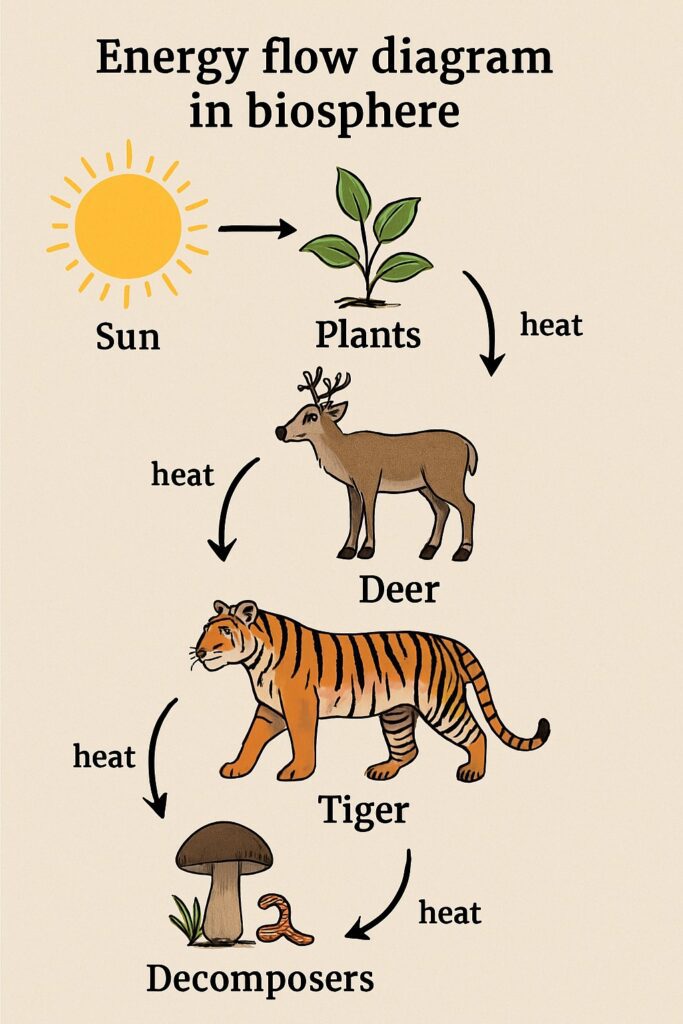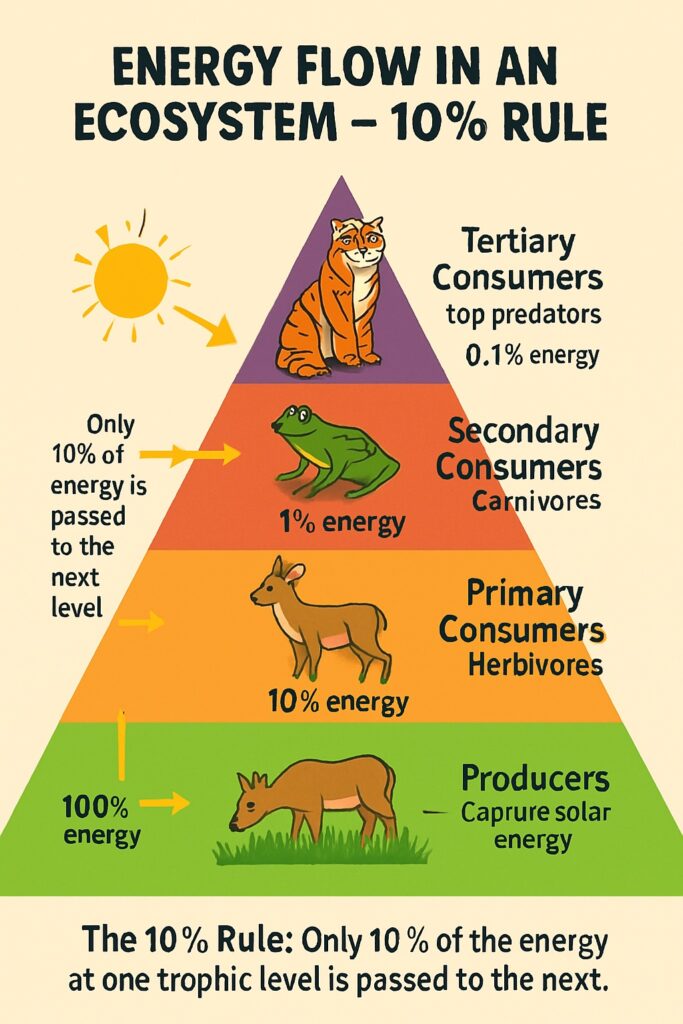Energy flow in ecosystems refers to the movement of energy through the different trophic levels, from primary producers to top predators and Decomposers. Energy is a crucial factor for life in an ecosystem and is essential for maintaining the balance of species and populations.

Table of Contents
The Source of All Energy: The Sun
The Sun is the ultimate source of energy for most ecosystems. It provides the solar energy that is captured by green plants (producers) and used to fuel life processes.
-
Only 1% of sunlight that reaches Earth is used by plants for photosynthesis.
-
This small amount is enough to support entire ecosystems.
Trophic Levels: Who Eats Whom?
Organisms are grouped based on how they obtain energy into different trophic levels:
Producers
-
Convert solar energy into chemical energy via photosynthesis.
-
Examples: Grasses, algae, phytoplankton
Primary Consumers (Second Trophic Level)
-
Herbivores that eat producers.
-
Examples: Deer, rabbits, zooplankton
Secondary Consumers
-
Carnivores that eat herbivores.
-
Examples: Frogs, small fish
Tertiary Consumers
-
Top predators that eat other carnivores.
-
Examples: Tigers, hawks, sharks
Decomposers
-
Break down dead matter and return nutrients to the soil.
-
Examples: Fungi, bacteria
The One-Way Flow of Energy
Unlike matter, which is recycled, energy flows in a single direction through an ecosystem. Once solar energy is captured by plants, it moves through each trophic level when one organism eats another. But with each transfer, a large portion of energy (about 90%) is lost as heat due to metabolism and life activities. Only about 10% of energy is passed on to the next level—this is called the 10% law.
Example
-
Grass captures 1000 units of energy.
-
Rabbit eats the grass: gets 100 units.
-
Fox eats rabbit: gets 10 units.
-
Tiger eats fox: gets only 1 unit.
Food Chains and Food Webs
Food Chain
A food chain is a simple, linear pathway showing who eats whom.
Example:
Grass → Grasshopper → Frog → Snake → Eagle
Food Web
In reality, organisms feed on multiple sources, creating a complex network of feeding relationships called a food web.
Ecological Pyramids
Ecological pyramids represent the structure of ecosystems and how energy or biomass is distributed across trophic levels.

Types of Ecological Pyramids
-
Pyramid of Energy – always upright (shows energy flow)
-
Pyramid of Biomass – shows amount of living matter
-
Pyramid of Numbers – shows number of individuals at each level
Conclusion
Energy flow in ecosystems is a fundamental principle of ecology. It begins with the Sun and moves through producers, consumers, and decomposers in a one-way stream, with significant energy loss at each step. Understanding this flow helps us appreciate the fragile balance of nature, guiding conservation and sustainable development.
Read: Geography Notes